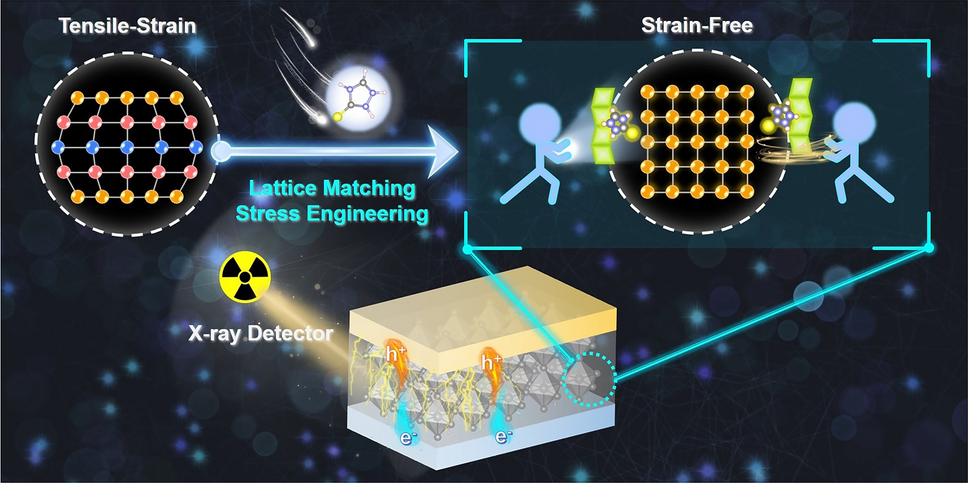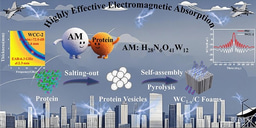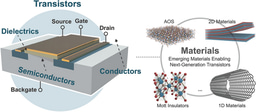Lattice Anchoring Stabilizes α‑FAPbI3 Perovskite for High‑Performance X‑Ray Detectors

As demand grows for high-performance, low-cost X-ray detectors in medical imaging, security screening, and industrial inspection, traditional materials like α-Se and CdZnTe face limitations in sensitivity, stability, or scalability. Now, researchers from Sun Yat-sen University, led by Professor Xu-Dong Wang and Professor Dai-Bin Kuang, have developed a groundbreaking lattice-anchoring strategy using low-dimensional perovskite to stabilize α-FAPbI3, enabling ultra-sensitive and stable X-ray detection.
Why This Breakthrough Matters
- Enhanced Structural Stability: The lattice-matched (HtrzT)PbI3layer mitigates tensile strain in α-FAPbI3, suppressing phase transitions and improving long-term stability.
- Superior Charge Transport: Strengthened Pb–I bonding and reduced defect density significantly boost carrier mobility and lifetime, critical for high-sensitivity detection.
- Low-Dose Detection: The resulting detector achieves a remarkable sensitivity of 1.83×105 μC Gyair-1 cm-2 and a detection limit as low as 27.6 nGyair s-1—far exceeding current medical imaging standards.
Innovative Design and Features
- Lattice Matching Strategy: A conjugated organic cation (HtrzT+) forms a low-dimensional perovskite that coherently interfaces with α-FAPbI3, reducing lattice mismatch to <3%.
- Defect Passivation: The thiol group in HtrzT+ coordinates with undercoordinated Pb2+ions, passivating traps and enhancing optoelectronic properties.
- Scalable Fabrication: Blade-coating and hot-pressing techniques enable uniform, large-area (10×10 cm2) thick films suitable for flat-panel X-ray imagers.
Applications and Future Outlook
- High-Resolution Imaging: The detector demonstrates clear X-ray imaging under both soft and hard X-ray energies, with excellent contrast and spatial resolution.
- Radiation Hardness: Stable performance under prolonged irradiation (equivalent to 1.17 million chest scans) highlights its potential for continuous-use medical devices.
- Commercial Viability: The low-cost, solution-processable material system and scalable fabrication route pave the way for next-generation X-ray imagers and security scanners.
This work presents a transformative approach to stabilize α-FAPbI3 perovskites for high-performance X-ray detection. It opens new avenues for developing stable, sensitive, and cost-effective perovskite-based detectors for real-world imaging applications. Stay tuned for more innovations from Professor Wang and Professor Kuang’s team at Sun Yat-sen University!
Follow the Topic
-
Nano-Micro Letters

Nano-Micro Letters is a peer-reviewed, international, interdisciplinary and open-access journal that focus on science, experiments, engineering, technologies and applications of nano- or microscale structure and system in physics, chemistry, biology, material science, and pharmacy.






Please sign in or register for FREE
If you are a registered user on Research Communities by Springer Nature, please sign in